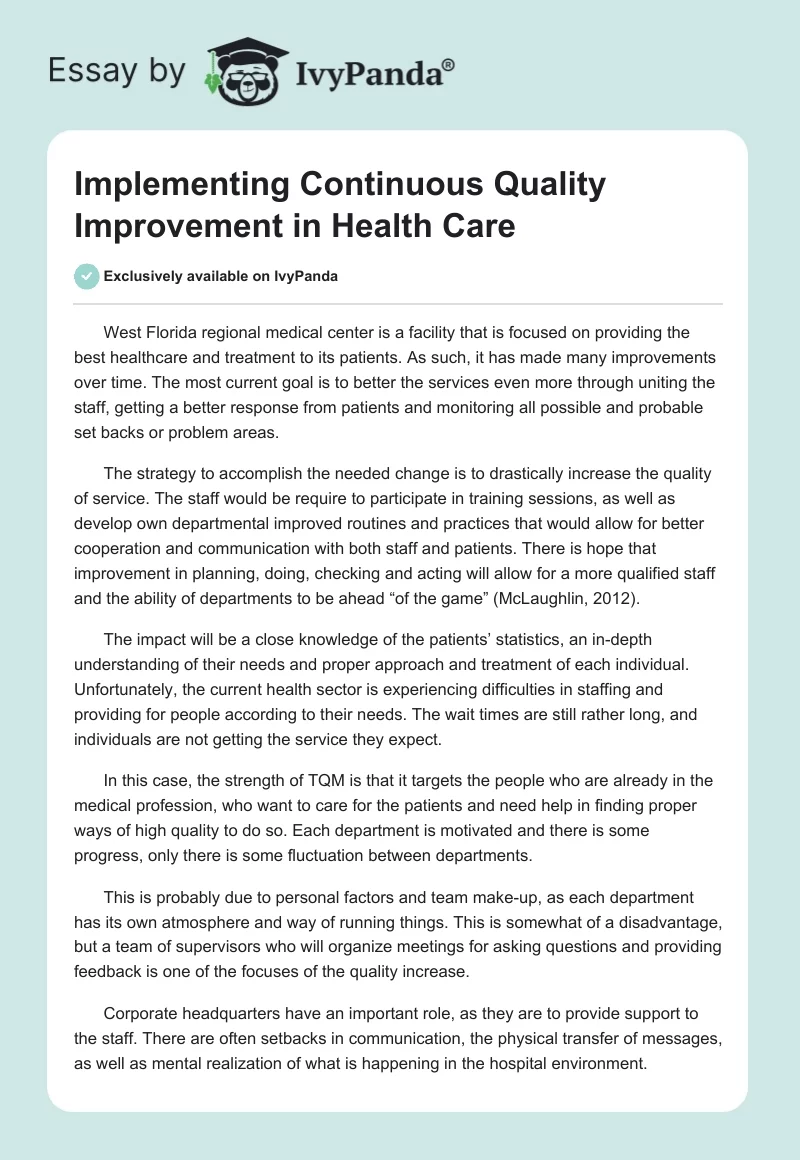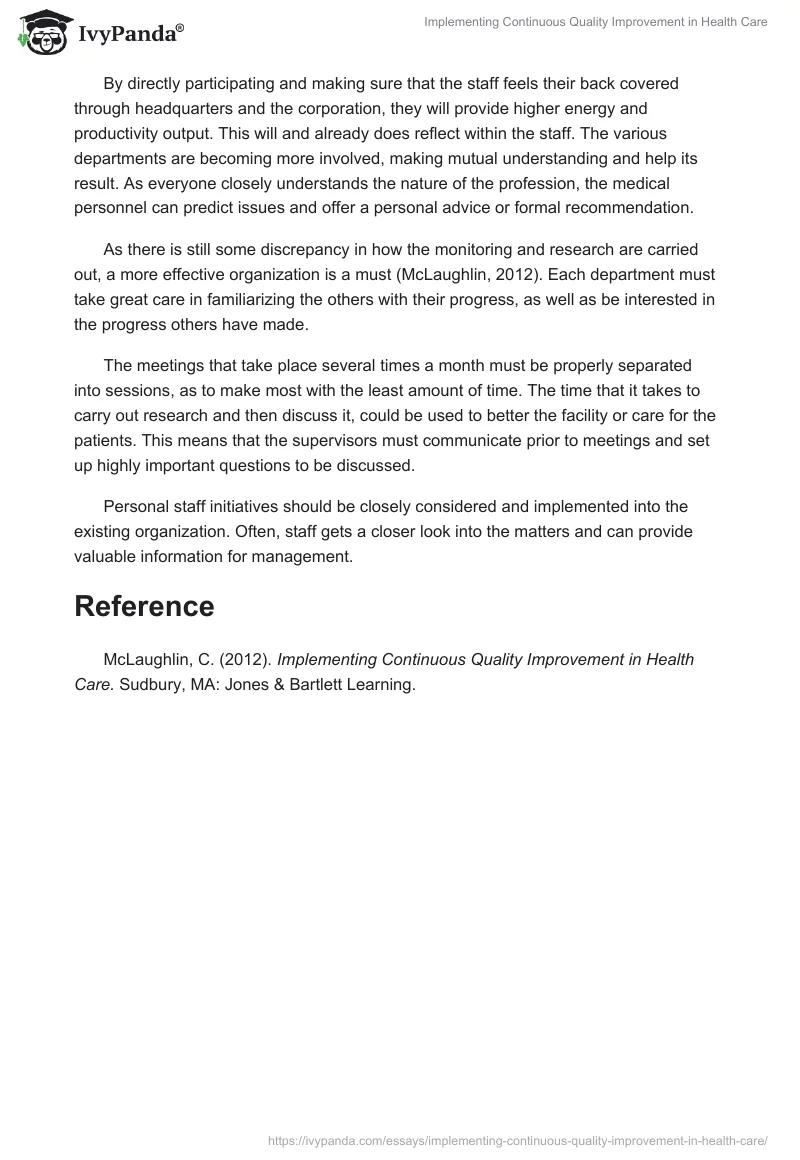West Florida regional medical center is a facility that is focused on providing the best healthcare and treatment to its patients. As such, it has made many improvements over time. The most current goal is to better the services even more through uniting the staff, getting a better response from patients and monitoring all possible and probable set backs or problem areas.
The strategy to accomplish the needed change is to drastically increase the quality of service. The staff would be require to participate in training sessions, as well as develop own departmental improved routines and practices that would allow for better cooperation and communication with both staff and patients. There is hope that improvement in planning, doing, checking and acting will allow for a more qualified staff and the ability of departments to be ahead “of the game” (McLaughlin, 2012).
The impact will be a close knowledge of the patients’ statistics, an in-depth understanding of their needs and proper approach and treatment of each individual. Unfortunately, the current health sector is experiencing difficulties in staffing and providing for people according to their needs. The wait times are still rather long, and individuals are not getting the service they expect.
In this case, the strength of TQM is that it targets the people who are already in the medical profession, who want to care for the patients and need help in finding proper ways of high quality to do so. Each department is motivated and there is some progress, only there is some fluctuation between departments.
This is probably due to personal factors and team make-up, as each department has its own atmosphere and way of running things. This is somewhat of a disadvantage, but a team of supervisors who will organize meetings for asking questions and providing feedback is one of the focuses of the quality increase.
Corporate headquarters have an important role, as they are to provide support to the staff. There are often setbacks in communication, the physical transfer of messages, as well as mental realization of what is happening in the hospital environment.
By directly participating and making sure that the staff feels their back covered through headquarters and the corporation, they will provide higher energy and productivity output. This will and already does reflect within the staff. The various departments are becoming more involved, making mutual understanding and help its result. As everyone closely understands the nature of the profession, the medical personnel can predict issues and offer a personal advice or formal recommendation.
As there is still some discrepancy in how the monitoring and research are carried out, a more effective organization is a must (McLaughlin, 2012). Each department must take great care in familiarizing the others with their progress, as well as be interested in the progress others have made.
The meetings that take place several times a month must be properly separated into sessions, as to make most with the least amount of time. The time that it takes to carry out research and then discuss it, could be used to better the facility or care for the patients. This means that the supervisors must communicate prior to meetings and set up highly important questions to be discussed.
Personal staff initiatives should be closely considered and implemented into the existing organization. Often, staff gets a closer look into the matters and can provide valuable information for management.
Reference
McLaughlin, C. (2012). Implementing Continuous Quality Improvement in Health Care. Sudbury, MA: Jones & Bartlett Learning.


